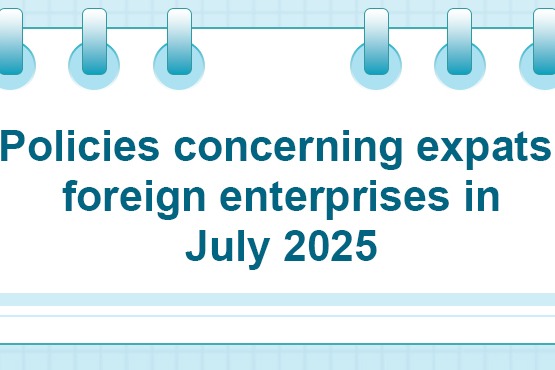Monetary policy has key role in stabilizing growth


On June 28, the People's Bank of China, the central bank, announced in a statement released after a quarterly meeting of its monetary policy committee that it will work to "strike a balance between economic recovery and risk prevention", a phrase worthy of attention.
In the second half, a major issue will be once the United States Federal Reserve begins normalizing its monetary policy, whether or not China will begin shifting its monetary policy stance or not in an effort to defuse "external risks".
Based on the new developments, we believe that in the second half, China's monetary policy is likely to cater to key domestic needs instead of following the Fed's steps. Shoring up weak areas and building a consolidated safety net for China's economy will be the major considerations for China's monetary policy.
It was decided at a State Council executive meeting on July 7 to "make timely and appropriate use of monetary tools such as reserve requirement ratio cuts and scale up the financial sector's support for the real economy, particularly for small and micro businesses, to bring down their overall financing costs".
The announcement, which surprised the market, further signaled the stability and effectiveness of China's monetary policy move.
The central bank announced on July 9 that it would cut the RRR by 50 basis points for eligible financial institutions from July 15 to support the real economy.
The RRR cut, which has since been imposed on all financial institutions except those that have already held the ratio at 5 percent, will likely release 1 trillion yuan ($154.43 billion) in long-term funds.
After the reduction, the weighted average RRR for Chinese financial institutions stands at 8.9 percent.
The cut aims to improve the fund structure of financial institutions and boost their capabilities in financial services to improve support of the real economy, the PBOC said.
Financial institutions will use part of the released funds to repay maturing medium-term lending facilities. Some funds were there to fill the liquidity gap during the tax payment season in late July.
The reduction will lower fund costs for financial institutions by around 13 billion yuan each year, according to the PBOC calculation.
The RRR cut is a regular operation after the country's monetary policy returned to the pre-pandemic status, the central bank said.
The PBOC added in a statement, "The direction of the prudent monetary policy has not changed." Instead of resorting to a "flood-like" stimulus, the PBOC pledged to stick to a normal monetary policy while keeping it stable and effective.
The PBOC also said that going forward, it will continue to implement a prudent monetary policy while keeping liquidity at a reasonable and ample level, in an effort to create a suitable monetary and financial environment for China's high-quality development and supply-side structural reform.
Another development is that US treasury yields are going down. Since April, the 10-year US Treasury yield has recently fallen from 1.74 percent to 1.44 percent as of July 5. The trend is mainly attributable to the sequencing effect of the new round of quantitative easing. We expect that going forward, for the second half, US treasury yields will start to rise again, and we expect the yield will rise to around 2 percent this year.
Currently, China's bond yield stands at 3 percent, and the gap between the two countries' treasury yields is narrowing. Therefore, in the current half, when US treasury yields are likely to rise, China's monetary policy should allow proper depreciation of the yuan instead of following the Fed's move. This also conforms to the idea of "realizing internal and external balance"-which was referred to in the PBOC quarterly meeting announcement.
It is also worth noting that in the PBOC's announcement, the central bank reiterated the importance of "continuing to bring down overall financing costs for businesses".Currently, demand for lower borrowing costs mainly has three facets.
First, there are notable weak areas in the industry chains of downstream businesses. As pointed out in an earlier report, China's economic recovery is still uneven. Though growth rates of exports and industrial output, measured by a two-year average, have outperformed pre-COVID-19 levels, downstream businesses are still weak with low profits, weak investment momentum and large stockpiles. The weak recovery of downstream businesses is also the major reason slowing the recovery of manufacturing investment.
Second, efforts need to be made to improve employment so as to boost consumption and inject stronger confidence into businesses. China's surveyed urban unemployment rate in 31 major cities stood at 5.2 percent by May, a level higher than that in the same period in 2018(4.7 percent) and 2019(5 percent).
At the same time, the leveraging role of industrial revenue increases may have a limited ability to boost employment as firms are likely to reduce hiring due to their concerns over a number of issues, including unstable foreign trade relations between China and the United States and the challenges of technological upgrading.
Third, liquidity and cash flows of private businesses still need to be protected and supported.
Also, there are two major phenomena worth pointing out. First, any tightening of monetary policy is not a foolproof response to inflation. Currently, the rising level of inflation comes mainly from the spillover effects of overseas commodity price rises and domestic industrial output controls focusing on green development. Second, it is important to see that though China's fiscal policy is likely to work more proactively in the second half, fiscal policy's role in leveraging infrastructure might be limited, considering the strict supervision of local government debt. Therefore, in the second half, infrastructure investment has limited potential for significant increase, and monetary policy still needs to play a critical role in stabilizing growth.
One other thing to notice is the disruptive liquidity base effect last year, mainly triggered by the monetary policy at that time. It is likely that this year more efforts will be made to stabilize credit growth.
However, it should be noted that on the one hand, the maturity of credit bonds in the second half (especially in the third quarter) is still not small, and the refinancing ability of some low-rated entities will be tested. On the other hand, this year is the last year of the transition period of the new asset management regulations. According to the policy arrangement of "appropriate extension of the transition period+case-by-case handling", most assets must be rectified before the end of the year, which means that off-balance-sheet assets still face pressure.
The writer is chief economist with Ping An Securities.
The views don't necessarily reflect those of China Daily.





































